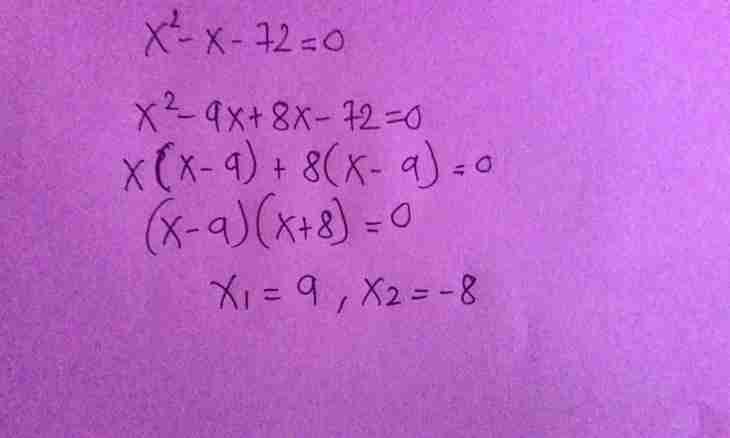Determination of the sum of roots of the equation - one of necessary steps at the solution of quadratic equations (the equations of a type of ax² + bx + c = 0, where coefficients of a, b and c — any numbers, and a ≠ 0) by means of Vieta theorem.
Instruction
1. Write down a quadratic equation in the form of ax² + bx + c = 0 Example: Initial equation: 12 + x² = 8khpravilno the written-down equation: x \-8x + 12 = 0
2. Apply Vieta theorem according to which, the sum of roots of the equation will be equal to the number of ""b"" taken with the return sign, and their work - to number of ""c"". Example: In the considered equation of b=-8, c=12, respectively: x1+x2=8x1∗x2=12
3. Learn, positive or negative numbers are roots of the equations. If the work and the sum of roots - positive numbers, each of roots - positive number. If the work of roots - positive, and the sum of roots – a negative number, then both roots one root has the sign ""+", and other sign "" -"" In that case it is necessary to use the additional rule: ""If the sum of roots – positive number, a root, bigger on the module, too positive, and if the sum of roots - a negative number - a root, bigger on the module, - negative"". Example: In the considered equation both the sum, and the work - positive numbers: 8 and 12, is meant by both roots - positive numbers.
4. Solve the received system of the equations by selection of roots. It will be more convenient to begin selection with multipliers, and then, for check, to substitute each couple of multipliers in the second equation and to check whether there corresponds the sum of these roots to the decision. Example: x1∗x2=12 Suitable couples of roots will be respectively: 12 and 1, 6 and 2, 4 and 3proverte the received couples by means of x1+x2=8 equation. Couple 12 + 1 ≠ 86 + 2 = 84 + 3 ≠ 8sootvetstvenno roots of the equation are numbers 6 and 8.

